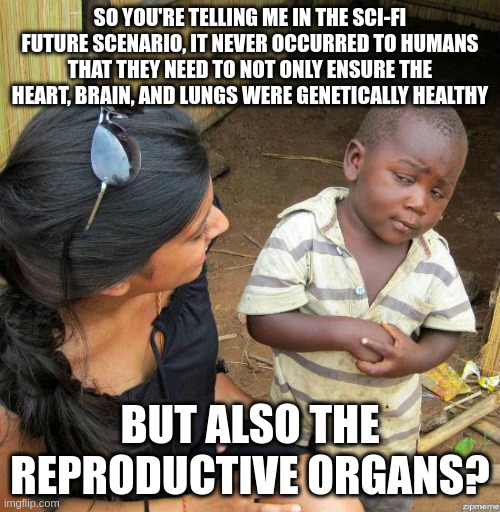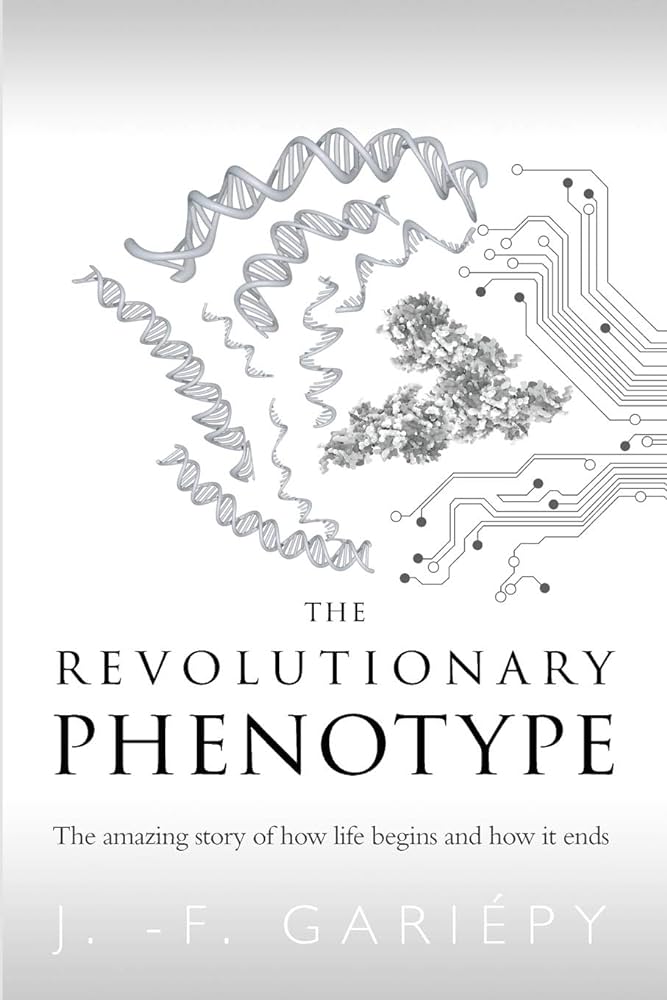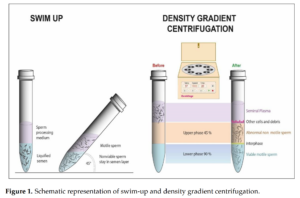Over the years, the enthusiastic fans of Jean Francois Gariepy (JFG) have been trying to goad me into reading his book. I had avoided it because people I trust say it’s nothing too special. Alas, I was a bit too honest about this fact on Twitter, and JFG sent his troops after me:

While his fans were busy dreaming up fallacies they mistakenly thought I was committing, the fact of the matter is that there are millions of books one can read. Life is short. Read the most plausible stuff first, you can’t read everything. There was no particular reason to dive into this book, except that it supposedly can be used to justify opposition to embryo selection. In fact, this whole affair started because I said opponents of embryo selection don’t have much to offer except for their neuroticism:

JFG didn’t like my tweets and even sent his fans to mess up my poll (the distribution of votes without his influence was moderately negative), and he blocked me for a while. This poor behavior from him is of course what I had expected all along, and was an additional reason why I had avoided engaging with him. I will probably regret writing this review because it will result in another round of Twitter harassment. Yawn.

Anyway. Fine. I decided to take the bait and read the book. It’s 50 pages in my ebook reader, so it was just a few hours of work.

Was it worth it? JFG’s big idea is that sometimes replicators make a new type of replicator that takes over, and this might occur in the near future again to our detriment. In biology, we think that DNA evolved from RNA. These days almost everything is made of DNA, not RNA. In that way, one could say that RNA’s ‘replicator child’ (DNA) took over the world and left RNA behind. RNA is still used in the machinery of DNA-based life since it is used in protein synthesis:

JFG calls this a revolutionary phenotype. In fact, the book is full of new terms he made up. Here’s a list, I probably missed some:
- native replicator
- embedded life forms
- “to n d”
- quene
- qream, qreamplex
- replicator tango
- The Naked Warrior
- Trickster Printers
- fool replicator
This tendency is typical of philosophy, especially the work of Dan Dennett, whose work JFG builds on. In fact, if you have already read Richard Dawkins, Dan Dennett, and Susan Blackmore’s biology and memetics books, you won’t learn too much from this book. On the other hand, this book is shorter than reading their work.
Aside from the annoying neologisms, the book is extremely pompous. Let’s quote from the foreword:
Letter to the Reader
It has now been more than five years that I’ve been reflecting on the theory laid out in this book. Most employed scientists today do not have the leisure to spend that much time doing science. They spend most of their days writing grant proposals and asking the permission of ethics committees. Long-term thinking is not rewarded in academia, as a scientist must produce something “good” every year or so in order to remain competitive. The quality of scientific works, as a result, has greatly diminished. I quickly realized that if I maintained employment in a university, I would be unable to put in the intellectual efforts this scientific theory deserved. When I discovered the first few elements of this theory, I resigned from my postdoctoral position at Duke University. I knew that anything I would spend my time on in the academic world would inevitably be less important than this book. Along the way, I had to find survival strategies other than begging the state for money to fund my scientific project. It turned out to be quite fascinating. I started a YouTube career and I now make a living out of discussing science, news and politics on the Internet. A theory as important as the one laid out in this book usually comes with a letter of introduction from a well-known scientist in the field. I did not solicit such letters. The truth needs no introduction. Furthermore, the theory contained in this book is important enough that, one day, any person interested in the fate of humanity will feel obligated to read and share it.
And the prologue:
Prologue
How would you react if, in the first few lines of a book, the author told you the book you’ve just opened contains the complete description of how humanity will almost certainly destroy itself? Would you close the book and hope that no one else reads it? Or would you absolutely want to read it and spread the word about its contents to others? I’m not asking these questions merely as a thought experiment. You are indeed holding a book which portends the end of DNA based life on Earth. Most of the technology required to implement this carnage has already been developed and there are no international laws keeping anyone from using it. Furthermore, there is very little hope that enough people will read this book and be motivated enough to keep this slaughter from happening. If anything, a naive part of humanity may very well read this book and be encouraged by it, joyfully welcoming humanity’s upcoming extinction. Hopefully, though, the information contained in this book will motivate humans to look at the path we have so naively engaged in. If the readers of this book act in concert, we may be able to stop humanity from committing a monumental mistake.
JFG clearly has high opinions of his ideas. So I was curious. What work has JFG done to justify such a stance? He does have a ResearchGate profile, so we can easily check. From my count:
- He has published 21 papers. Of these, 5 are first authors (usually meaning he did most of the work), and 1 is last author (usually meaning he had some substantial role). The remaining papers he is a middle author, usually meaning that he did some lab work, or was someone’s student at the time. Most of his papers are trivial neuroscience stuff (e.g. “Neuronal reference frames for social decisions in primate frontal cortex”, “The interactions between locomotion and respiration”)). Nothing to write home about.
- He has written one short book published in 2018. As of writing, though JFG clearly thinks it has extreme importance, it has been cited a total of 1 time, and that’s in some Russian language document. Clearly, not much has come out of this work. No one pays any attention to it outside of his fan circle.
Of course, it should be said that, in principle, great scientific advancements can come from scientific nobodies — it just isn’t very likely. If JFG had published some other impressive work previously, it would help people take his book seriously.
These introductory remarks aside. Here’s some other quotes from the book, with my comments.
What does a phenotypic revolution look like? How does it unfold? Allow me to sketch the following fictional scenario: Suppose you want to have a child, but instead of reproducing in the traditional fashion, you and your mate opt to store your genetic information on a computer. Then, while your genes are digitally stored on the computer’s hard drive, you decide to make a few minor edits—just some slight improvements to ensure your kid will be healthy. You then dump your revised digital genome into a series of DNA molecules, which you inject into a human egg that has been stripped of its own native genome. Nine months later, your flesh-and-blood child is born, and you and your family proceed with your deeply satisfying life. You end up never regretting the decision you have made to modify a few genes in your child’s DNA. Your child likes it too since he has better health and strength compared to most of his peers. He’s already dreaming of having his own genetically modified children. Now, because phenotypic revolutions occur over millions of years, this happy ending would be the end of the story as far as you are concerned. However, suppose that before you perish, you are transported via Elon Musk’s new spaceship time machine to planet Earth 10 million years into the future. As your craft descends toward the newfangled terra firma, you are promptly disappointed. You had expected to see a vibrant, flourishing human civilization, the assumed benefactor of millions of years of culture and innovation, but as you step onto the surface of your once familiar planet, you recognize nothing. Humankind is absent, and all of its marvelous achievements are gone. What you find on your planet is a robot populace busy exploiting some creatures that bear only the faintest physical resemblance to humans. These unfortunate, humanoid creatures live in servility to their mechanical overlords, and though you attempt to provoke them into open revolt against their slave-masters, no one listens. It’s not that they can’t rebel—it’s that they don’t want to. They are perfectly content with eternal servitude to their robot rulers.
Here we get to his doomsday scenario. While AI doomsday scenarios are dime a dozen these days, this one doesn’t have much plausibility. Why would AI bother editing human genetics to make us dumb labor? AI doesn’t need human dumb labor. In fact, humans today in advanced countries barely need dumb labor. Future AI overlords will have machines to do this work much more efficiently. It doesn’t make any sense. It sounds like the story of The Matrix where humans are used as a power source. That doesn’t make any sense either. Humans don’t generate power robots can use. Humans are net negative energy machines, they consume rather than generate energy. It’s something you take for granted as part of suspension of disbelief to get on with the story.
Are phenotypic revolutions a new idea?
This book is the first to use the term “phenotypic revolutions” to designate the transitions that occur between different life forms, but the notion that DNA is the product of a previous RNA-based life form is not new. That idea has been around for over 50 years and is the most widely accepted hypothesis for the origin of DNA. In fact, Patrick Forterre deserves credit for advancing some of the important hypotheses that may explain the transition from RNA to DNA. In this text, I advance his work and provide a set of theoretical explanations that extend some of the theories he has been exploring. As for the theory of phenotypic revolutions, it is all but announced in the writings of Dawkins. In The Selfish Gene 2 , he writes: The original replicators may have been a related kind of molecule to DNA, or they may have been totally different. In the latter case we might say that their survival machines must have been seized at a later stage by DNA. If so, the original replicators were utterly destroyed, for no trace of them remains in modern survival machines. Although the idea is not developed further, this passage illustrates Dawkins’ awareness that replicators can create other replicators, only to be defied by them. The “seizing” of a survival machine proposed by Dawkins is nothing other than a phenotypic revolution.
As mentioned before, this idea is not new. I think many readers of The Selfish Gene had the same idea: So if DNA took over after RNA, which maybe took over after some unseen pre-RNA protein lifeform, what is the next replicator after DNA? This is the idea of this book, just with new terminology and oddly placed AI fears.
The line of reasoning within modern memetics is extrapolated from an idea initially coined by Richard Dawkins. The theory of natural selection is deceptively simple (everything that reproduces imperfectly is subject to evolution), and as Dawkins points out in The Selfish Gene, this simple principle could apply to entities that we typically consider inanimate, such as memes. As a thought experiment, he gave the status of replicator to cultural ideas and called them “memes,” but in his original formulation, he raised the possibility that these replicators may very well remain at the mercy of genes at all times. Since then, memetics has changed, and its proponents have advanced Dawkins’ original suggestion dramatically. Susan Blackmore and Daniel Dennett are now two of the boldest advocates of the position that the evolution of memes and genes may indeed clash. Can human culture elevate us beyond the imperative of our genes? In what sense can memes act as replicators, and to what extent are they capable of competing with human DNA during evolution? Most of these questions will be answered in Part II, where I argue that memes only qualify as “fool replicators” in that they are replicators whose copying process depends on other replicators, thus greatly limiting their evolution.
We might as well say it clearly here: Memetics is wrong, and Richard Dawkins was right in remaining suspicious of his own idea. As fool replicators, memes cannot challenge the viability of DNA. So what can? In order to conceive of an organism in which a fight between replicators indeed occurs, we must consider the last legitimate phenotypic revolution, one in which the products of a life form succeeded at perverting the mechanisms of its contemporaneous evolution—the phenotypic revolution of DNA, which played out four billion years ago.
I don’t think this distinction works too well. Viruses are famously unable to reproduce without hosts, making them fool replicators in his terminology as well (in fact, many biologists don’t consider them “life”). But we can go further. Nature is full of species that can only reproduce in relationship with another species. They exist in co-dependent symbioses. Readers will be familiar with flowers and bees (and some birds), but the examples are legion in biology. In fact, we also have these inside us in the form of mitochondria. Mitochondria have their own DNA that is distinct from our chromosomes and which is passed down from mother to child. This fact is used to trace maternal line of descent in genetics, in the same way that the Y chromosome is used to trace paternal ancestry (haplogroups). Are mitochondria fool replicators too? Are we? We can’t live without mitochondria. Is this a useful term? I see what he’s getting at, but I think when you think of these other examples, it is less useful than it originally appears. I think readers with a background in biology will raise an eyebrow at these ideas.
The book ends with JFG expanding on his doomsday scenario with a fictional example:
This thought experiment emphasizes the very real possibility of phenotypic revolutions and the need for vigilance when it comes to shaping future societal decisions. Within the next few decades, human civilization will have to decide whether it wants to instigate a phenotypic revolution or whether it will remain attached to the idea of self-replicating, DNA-based humans. This book may or may not be able to stop such an event, but it can at least inform readers of the consequences of genetic modifications, allowing them to enter the future with their eyes open, and perhaps alert others to the possibility of the following scenario occurring. If there is sufficient motivation for preserving a DNA-based human existence on Earth, then nothing less than a worldwide, coordinated effort to cease the genetic modification of human babies will suffice to stop the next revolutionary phenotype.
And the story:
Something quite shocking happened in the first decades of operation at the qChoice clinics. What had started as a boutique reproductive assistance technique produced something far more profound with far-reaching impact. The children from this clinic were remarkable—superior to their peers in almost every measurable regard. They had better grades and fewer illnesses. They were more likely to become billionaires. These enhanced youths “naturally” worked harder and longer than everyone around them. Eventually, they went on to live longer lives with better jobs, and had more beautiful romantic partners and heftier salaries. Their successes transcended class—even impoverished qChoice kids outperformed their wealthier, non-genetically-modified peers. But the advantages of qChoice kids extended well beyond economic gains. They were better athletes, more attractive, and even, somehow, more likeable. They had perfect eyesight and never needed braces. Not one of them suffered from ADHD, anxiety, depression, or even low self-esteem. How could they? But there was one domain in which they were handily surpassed by the unedited majority: natural fertility. As most of the qChoice kids descended from parents with reproductive difficulties, many had procreation problems themselves. Accordingly, their sexual organs suffered from various physical dysfunctions.
…
Soon human reproductive tracts began to wither. Fallopian tubes deteriorated because there was no evolutionary advantage to the migration of fertilized zygotes through these structures. Moreover, such unimpeded oviducts were evolutionarily disadvantageous as they permitted parents to conceive natural offspring who would be less fit. The male sexual organs experienced a similar decline. Many males were born without testicles, which turned out to be a useless (and “unsightly”) accessory, since the doctors were able to produce one’s offspring by extracting their DNA from a saliva sample. Some men were still born with testicles, but most of them were asking for them to be removed, as this vestigial organ was seen as a useless seat for potential diseases and infections.
He doesn’t seem to have thought much about these ideas. Clearly, animal and plant breeders have been doing artificial selection, including with embryos, for decades at this point. They are well aware of such issues. The simple fact is that when one would be doing the editing and or selection, one would also make sure to keep the natural machinery for reproduction working. It’s like when embryo selection critics say “what if we are selecting for X, but it has some unintended consequences?” Yes, animal breeders know about this. They are called genetic correlations. Genetic correlations are monitored and incorporated into the selection models to ensure the results are good. You can read about this kind of work in papers with glorious titles like “Symposium review: Breeding a better cow—Will she be adaptable?“. It’s not only not a big problem, it’s already routine practice. In fact, the same problem occurs even without genetic prediction/embryo selection methods, as this 1998 paper discusses. Somehow in his scenario this is not done.

I don’t think The Revolutionary Phenotype offers much against embryo selection. It does offer a new philosophical take on the replicator question in biology and memetics. It’s a quick read, but nothing too special.

